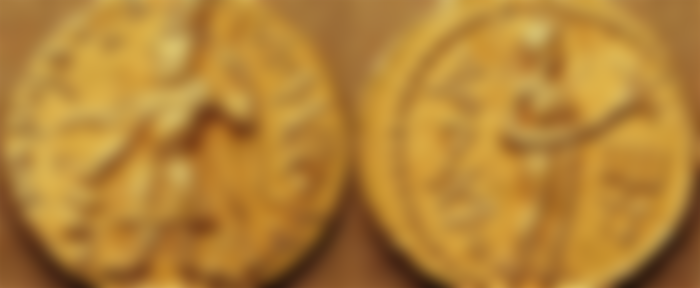The value of Gold in Ancient times
Gold does not corrode and therefore was a symbol of immortality and power in many ancient cultures. Its rarity and aesthetic qualities made it an ideal material for the ruling classes to demonstrate their power and position. First found at surface level near rivers in Asia Minor, such as the Pactolus in Lydia, gold was also mined underground by the Egyptians from 2000 BC and later the Romans in Africa, Portugal, and Spain.
There is also evidence that the Romans smelted gold particles from ores such as iron pyrite. Gold, which is easily worked and mixed with other metals such as silver and copper to increase its strength and change its color, has been used for a wide variety of purposes.
In most ancient cultures, gold was popular in jewelry and art because of its value, aesthetic qualities, ductility, and malleability. Electrum (a natural alloy of gold and silver) was used in jewelry by the Egyptians from 5000 BC. Around 3000 BC, gold jewelry was worn by both men and women in the Sumerian civilization, and gold chains were first produced in the city of Ur in 2500 BC.

The Minoan civilization in Crete in the early 2nd millennium BC is credited with producing the first chain jewelry, and the Minoans made a wide variety of jewelry using a wide range of techniques. Gold jewelry took the form of necklaces, bracelets, earrings, rings, diadems, necklaces, pins and brooches.
Techniques and shapes include filigree (a technique known to the Egyptians since 2500 BC), in which gold is drawn into wire and twisted into different designs), fine hammered shapes, granulation (surface decoration with small, brazed gold granules), embossing, engraving, inlay, molding and machining.
In South America, gold was similarly worked by the Chavin civilization of Peru around 1200 BC, and gold casting was perfected by the Nazca society from 500 BC. The Romans used gold as a setting for precious and semiprecious stones; A fashion continued in the Byzantine period with the use of pearls, gemstones and enamels.
Gold was first used as coins in Asia Minor in the late 8th century BC. Coins of irregular shape and usually only one side stamped were usually made of electrum. The first pure gold coins with stamped figures date back to BC. It was built by the Lydian King Croesus between 561-546 and a modern gold refinery was established in the capital city of Sardis.
Even the purest naturally occurring gold may contain 5% silver, but the Lydians were able to refine their gold using salt and furnace temperatures between 600 and 800°C. The salt was mixed with silver and formed a vapor of silver chloride, leaving pure gold that could be used to create a standard coin with guaranteed gold content.
As with the later Greek and Roman Empires, the Mycenaean civilization also widely used gold coins, although silver was the more common material. One of the most famous gold coins of antiquity was the Roman bezantine. First introduced during the reign of Emperor Constantine, it weighed 70 Trojan grains and was the currency from the 4th to 12th centuries AD.
Concerns over the authenticity of gold led the Egyptians to develop a method for determining the purity of gold around 1500 BC (or earlier). This method is called fire testing and involves taking a small sample of the material being tested and firing it in a small crucible with some lead. The crucible was made of bone ash and absorbed lead and other base metals during the firing process, leaving only gold and silver.
The silver was removed using nitric acid and the remaining pure gold was weighed and compared to the weight before firing. Archimedes was also aware that the specific gravity of gold varies depending on the percent content of the base metals, for example pure gold has twice the weight of silver.
Gold is such a valuable material that over the centuries several attempts have been made to produce it through alchemy - namely its chemical conversion of base metals into gold using philosopher's stone (lapis philosophorum). The first attempts were made in China in the 4th century BC, as well as in ancient Greece, and although unsuccessful, the activity nevertheless laid the foundations of modern chemistry.
